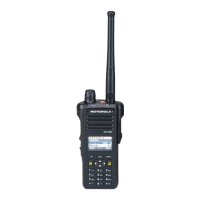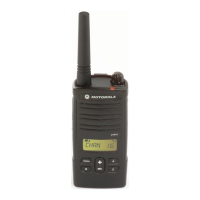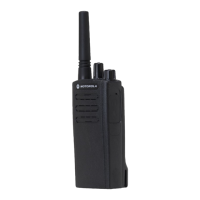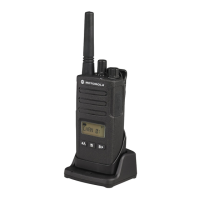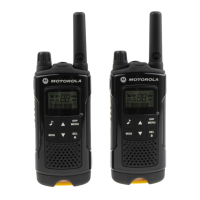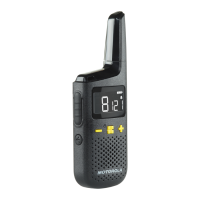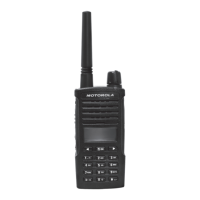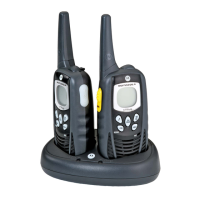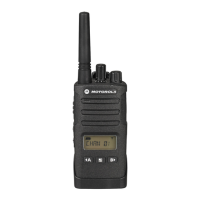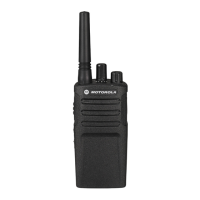Chapter 2.5 900MHz Overall Characteristics
2.5.1 Introduction
This manual is to be used in conjunction with the ASTRO XTS 2500/XTS 2500I Digital Portable
Radios Basic Service Manual (Motorola part number 6816984H01), which uses the pass/fail service
approach to radio problems.
The ASTRO XTS 2500/XTS 2500
I digital portable radio is a dual-band, (trunked/conventional),
microcontroller-based transceiver incorporating a Digital Signal Processor (DSP). The
microcontroller handles the general radio control, monitors status, and processes commands input
from the keypad or other user controls. The DSP processes the typical analog signals and generates
the standard signaling digitally to provide compatibility with existing analog systems. In addition, it
provides for digital modulation techniques, utilizing voice encoding techniques with error correction
schemes, to provide the user with enhanced range and audio quality all in a reduced bandwidth
channel requirement. It allows embedded signaling which can mix system information and data with
digital voice to add the capability of supporting a multitude of system features.
The three ASTRO XTS 2500/XTS 2500
I digital portable radio models (I, II, and III) are available in
the 900 MHz (896 – 941 MHz) band.
The ASTRO XTS 2500/XTS 2500
I digital portable radio consists of:
•a main board,
•a universal flex, and
• display and keypad assemblies (models II and III only).
• display only with no keypad (model 1.5 only)
The main board contains the microcontroller unit (MCU) and its associated memory and memory
management integrated circuit (IC), the audio power amplifier, and a switching regulator. The board
also contains the digital signal processor (DSP) and its support IC and associated memories. All
transmit, receive, and frequency generation circuitry, including the digital receiver back-end IC and
the reference oscillator are included on the main board.
The universal flex contains the universal connector, speaker, and a microphone.
The display module is a six-line x 12-character, liquid-crystal display (LCD) with associated circuitry.
This module utilizes chip-on-flex technology and is not considered field-repairable.
The keypad module is either a 3 x 2 (Model II), or a 3 x 6 (Model III) button module with backlighting.
2.5.2 Analog Mode of Operation-Receiving
When the radio is receiving, the signal comes from the antenna connector to the radio board, passes
through the RX/TX switch and the receiver front end. The signal is then filtered, amplified, and mixed
with the first local-oscillator signal generated by the voltage-controlled oscillator (VCO).
The resulting intermediate frequency (IF) signal (109.65 MHz) is fed to the IF circuitry, where the
signal is again filtered and amplified. This amplified signal is passed to the digital back-end IC, where
it is mixed with the second local oscillator to create the second IF at 2.25 MHz. It is then converted to
a digital bit stream and mixed a third time to produce a baseband signal. This signal is passed to the
Vocoder and Controller (VOCON) circuitry through a current-driven output. Please see page 4.5-5
for a detailed description of the VOCON functional blocks.

